Disclosure: This article contains affiliate links. We may earn a commission from purchases at no extra cost to you, which helps our travel content.
The night sky in Jakarta pulses with a different kind of constellation – not of stars, but of food carts, their small lanterns illuminating clouds of aromatic steam that rise like nebulae above sizzling woks and grills. As someone who's found solace in night skies during countless hospital shifts, there's something familiar and comforting about Jakarta's nocturnal food scene. My daughter Sofia and I recently spent a week exploring Indonesia's sprawling capital, diving headfirst into its culinary landscape that ranges from humble street carts to restaurants where chefs create edible art. What we discovered was not just food, but a living cultural tapestry that tells the story of Indonesia's diverse heritage, colonial influences, and modern innovation – all through flavors that dance across your palate with the same unpredictable beauty as weather patterns across open plateaus.
Navigating Jakarta's Street Food Universe
The morning air hung heavy with humidity as Sofia and I ventured into Glodok, Jakarta's historic Chinatown, where food vendors were already setting up their morning operations. As a trauma nurse, I've developed a sixth sense for environments – assessing situations quickly comes with the territory – and I could immediately tell we were in for something special.
Jakarta's street food scene operates with the precision of a natural ecosystem. Vendors specialize in single dishes perfected over generations, creating a decentralized restaurant experience where your 'courses' might be spread across an entire neighborhood. We started with bubur ayam (chicken porridge) – a breakfast staple that reminded me of the comfort foods I'd prepare during night shifts back home, except elevated with crispy shallots, shredded chicken, and the surprising brightness of kecap manis (sweet soy sauce).
By midday, we found ourselves at Kota Tua (Old Town), where colonial-era buildings provide a striking backdrop for some of the city's most beloved street food stalls. Here, Sofia discovered her love for kerak telor – a spicy omelette with glutinous rice and serundeng (fried coconut granules) that's prepared with theatrical flair by vendors who flip and toast the creation over charcoal burners.
What struck me most was how these street food areas functioned like weather systems – dynamic, changing throughout the day, with their own patterns and rhythms. Some vendors appear only at specific hours, while others transform their offerings as day turns to night, responding to the city's shifting appetites.

💡 Pro Tips
- Bring a small hand sanitizer for quick clean-ups between food stalls
- Look for busy stalls with high turnover – they're usually the freshest and tastiest
- Ask locals for recommendations – Jakartans are passionate about directing you to their favorite spots
Weather-Watching at Pasar Baru: Afternoon Thunderstorms and Culinary Revelations
One of my favorite atmospheric phenomena is the predictable pattern of afternoon thunderstorms in tropical regions – the way heat builds throughout the morning until the sky can no longer contain its energy. In Jakarta, I found a perfect spot to observe this meteorological dance at Pasar Baru, one of the city's oldest markets dating back to 1820.
We arrived around 11 AM, when the market's narrow lanes were already humming with activity. Food stalls here represent a microcosm of Indonesia's regional diversity, from Padang's famous rendang (slow-cooked spiced beef) to Makassar's coto (beef soup). Sofia and I made our way through the labyrinth, sampling small portions and noting how the flavors shifted like weather fronts – from the warming heat of Sumatran cuisine to the cooling freshness of Javanese salads.
As the afternoon heat intensified, we found shelter at a small warung (family-owned eatery) specializing in soto Betawi – a coconut-milk soup unique to Jakarta with tender chunks of beef and aromatic spices. The first heavy raindrops began to fall just as our bowls arrived, and soon we were enjoying this comforting dish while watching sheets of rain transform the market's atmosphere entirely.
I've always taught Sofia that weather isn't something to be feared but understood and appreciated. The same goes for unfamiliar foods. As we sat there, I pulled out my pocket weather meter – a tool I bring on all our travels to teach Sofia about microclimate patterns. We measured the dramatic drop in temperature as the storm cooled the market, creating that distinctive petrichor scent that mixed beautifully with the food aromas around us.
When the rain subsided, we emerged to find the market transformed – steam rising from hot surfaces, vendors reopening their stalls, and a renewed energy in the air. This rhythm of retreat and return reminded me of hospital life – the calm after a storm in the trauma unit, when you can finally breathe again.

💡 Pro Tips
- Visit markets during rain showers – they're less crowded and you'll see a different side of local life
- Carry a lightweight, packable rain jacket rather than an umbrella to keep hands free for eating
- Time your visit to Pasar Baru for late morning to experience both the bustling pre-rain market and the atmospheric rainy period
Stargazing and Satay: Jakarta's Rooftop Dining Revolution
While Jakarta's light pollution makes traditional stargazing challenging, I've discovered that the city offers a different kind of celestial experience – rooftop dining where the city lights mimic constellations below while you sample elevated versions of Indonesian classics.
After a day of exploring with Sofia, I arranged for a trusted sitter (the concierge at our hotel connected us with a wonderful university student studying childhood education) so I could experience Jakarta's growing rooftop dining scene. As a single parent who travels with my daughter, I've learned the importance of balancing family activities with occasional adult experiences that help me fully appreciate a destination.
At SKYE Bar & Restaurant on the 56th floor of the BCA Tower, I watched the sunset transform Jakarta's sprawling urban landscape into a glittering galaxy of lights. The menu here artfully bridges Indonesian flavors with modern techniques – their satay sampler featuring not just traditional chicken and beef, but unexpected offerings like grilled barramundi with lemongrass and black pepper duck with tamarind glaze.
What fascinated me as both a nurse and weather enthusiast was observing how the altitude affected the dining experience. The cooler air at this elevation created a pleasant respite from Jakarta's street-level humidity, while the changing cloud patterns throughout the evening painted the sky in shifting hues that complemented each course.
I struck up a conversation with a local couple at the next table – both doctors who were intrigued by my nursing background. They shared their favorite rooftop spots, including Hause Rooftop in Pasar Baru and Lucy in the Sky in the Senopati area. What began as a solo dining adventure turned into an impromptu medical professional meetup, with shared stories about healthcare systems and mutual passion for finding balance through travel.
I captured the stunning cityscape using my compact travel camera, which excels in low-light conditions – perfect for documenting these glowing urban constellations to share with Sofia the next morning over breakfast.

💡 Pro Tips
- Make reservations for rooftop restaurants at least 2-3 days in advance, especially for sunset time slots
- Ask for tables away from air conditioning units for the most comfortable temperature experience
- Consider a progressive rooftop evening – appetizers at one location, main course at another, and dessert at a third for different perspectives
Culinary Time Travel: Historical Dining Experiences
The layers of Jakarta's history – from its origins as Sunda Kelapa port to Dutch colonial Batavia to modern megacity – are perfectly preserved in its historic restaurants. For Sofia and me, exploring these culinary time capsules became our favorite educational activity, turning meals into living history lessons.
Café Batavia in Kota Tua stands as a monument to colonial-era dining, housed in a magnificently preserved 19th-century building facing Fatahillah Square. The interior feels like a museum, with walls covered in black and white photographs and ceiling fans slowly turning overhead. I explained to Sofia how the Dutch influence shaped not just architecture but also created unique fusion cuisines like rijsttafel – a Dutch colonial 'rice table' feast featuring dozens of small Indonesian dishes served simultaneously.
Watching my daughter connect historical dots through food has been one of my greatest joys as a parent. At Café Batavia, she noticed how the presentation of traditional Indonesian ingredients in European serving styles told the story of cultural exchange and power dynamics better than any textbook could.
We continued our culinary time travel at Dapur Babah Elite, where Peranakan cuisine (a blend of Chinese, Indonesian and Dutch influences) is served in a restored 1940s building filled with antiques. The restaurant itself functions as a kind of atmospheric pressure system, where different cultural influences collide to create something entirely new – like watching weather fronts merge and transform.
As a nurse, I've always been fascinated by how food preservation techniques developed alongside medicine – both born from the human need to maintain wellbeing. At Dapur Babah, dishes like babi chin (braised pork in sweet soy sauce) demonstrated ancient preservation methods that allowed communities to thrive before refrigeration existed.
For families traveling with children, these historical restaurants offer something invaluable – a multi-sensory learning experience where history becomes tangible through taste, smell, and atmosphere. Sofia's travel journal from our Jakarta trip contains more insights about colonial history gleaned from these meals than from any museum we visited.

💡 Pro Tips
- Visit historical restaurants during off-peak hours (2-5pm) for a more immersive experience with fewer crowds
- Ask staff about the building's history – many have fascinating stories not found in guidebooks
- Order at least one dish that represents each cultural influence for a complete historical dining experience
Family-Friendly Food Festivals: Seasonal Celebrations
Timing your Jakarta visit to coincide with one of the city's food festivals can transform a good culinary trip into an extraordinary one. When planning our week in Jakarta, I deliberately scheduled around the Jakarta Culinary Feastival, knowing that festivals combine two of my greatest travel passions – seasonal celebrations and atmospheric communal experiences.
The Jakarta Culinary Feastival, typically held in late October, transformed Senayan City into a gastronomic wonderland that delighted Sofia beyond my expectations. What made this festival particularly special was how it functioned like a controlled microcosm of Jakarta's entire food scene – from street food stalls to celebrity chef demonstrations, all in one navigable space.
As someone who's documented weather patterns across different regions, I've noticed how festivals often develop their own microclimate of energy. The culinary festival was no different – areas with live cooking demonstrations created pockets of heat and aromatic steam, while cooling stations with traditional drinks like es cendol (coconut milk with palm sugar and green rice flour jelly) provided refreshing counterpoints.
For families traveling with children, these festivals offer invaluable advantages. Sofia participated in a junior chef workshop where she learned to make dadar gulung (pandan crepes with coconut filling), while I attended a spice masterclass that connected my scientific interest in natural compounds with culinary applications. The festival provided a structured yet relaxed environment where we could both pursue our interests before reconvening to share discoveries.
I documented the experience using my action camera attached to a compact tripod, which allowed me to capture time-lapse videos of the festival's changing dynamics throughout the day while keeping my hands free to sample food and guide Sofia through the crowds.
Beyond the main culinary festival, we discovered smaller neighborhood celebrations like the weekly Pasar Santa modern market, where young food entrepreneurs showcase innovative takes on traditional recipes. These smaller events provided a perfect counterbalance to the grand festival – intimate spaces where conversations with vendors revealed the personal stories behind each dish.

💡 Pro Tips
- Research festival dates before booking your trip – many are seasonal but annual events
- Arrive at festivals early (within the first hour of opening) to avoid the largest crowds
- Budget separately for festivals – the opportunity to sample numerous small dishes adds up quickly but provides excellent value for culinary exploration
Morning Markets and Medical Insights: The Nutrition Behind Indonesian Cuisine
As a nurse, I've always approached food not just as pleasure but as medicine – understanding the nutritional foundations that sustain communities. Jakarta's morning markets offered the perfect laboratory for exploring these connections with Sofia, turning our early rising nurse/daughter habits into an advantage.
We arrived at Pasar Minggu at 5:30 AM, when the market was already pulsing with activity. The predawn air carried a coolness that would soon surrender to Jakarta's tropical heat, creating that brief comfortable window that market veterans know to exploit. What struck me immediately was the stunning variety of fresh produce – many varieties I couldn't identify despite my medical background and interest in nutrition.
A friendly vendor noticed my curiosity about unfamiliar fruits and launched into an impromptu nutrition lesson. She explained how snake fruit (salak) aids digestion, how red guava's vitamin C content far exceeds oranges, and how the bitter melon (pare) helps regulate blood sugar – a traditional knowledge that parallels modern medical understanding of these foods.
I documented these discoveries in my travel journal, which has become my repository for connecting traditional food wisdom with my nursing knowledge across different cultures. Sofia sketched the colorful produce displays in her own journal, absorbing both artistic inspiration and nutritional education simultaneously.
What fascinates me about Indonesian cuisine from a healthcare perspective is its intuitive balance – the way spicy elements are often countered with cooling components, how fermented foods support gut health, and how specific combinations appear designed to maximize nutrient absorption. At a small warung breakfast spot near the market, our bubur ayam (rice porridge) came with an array of condiments that each served both flavor and functional purposes – from immunity-boosting turmeric to digestive-aiding ginger.
For families concerned about nutrition while traveling, Jakarta's markets reveal how the foundation of Indonesian cuisine is remarkably balanced when you return to its fresh, unprocessed origins. Even street foods, when prepared with fresh ingredients, offer nutritional profiles that would satisfy most healthcare professionals – particularly when you learn to balance fried options with the abundant vegetable dishes like gado-gado (vegetable salad with peanut sauce) and plecing kangkung (water spinach with tomato sambal).

💡 Pro Tips
- Visit morning markets between 5:30-7:00 AM for the freshest selection and most authentic experience
- Bring small denominations of local currency for market purchases
- Ask vendors about traditional medicinal uses of ingredients – many are happy to share this cultural knowledge
Final Thoughts
As our week in Jakarta drew to a close, Sofia and I sat at a small warung near our hotel, sharing one last plate of nasi goreng while watching the interplay of clouds against the evening sky. Jakarta's culinary landscape had revealed itself to us like a complex weather system – dynamic, occasionally unpredictable, but ultimately following patterns that connected history, culture, and human ingenuity. What began as a food-focused trip evolved into something more profound – a father-daughter exploration of how communities express their identity through flavors, how traditional wisdom about nutrition parallels modern healthcare understanding, and how sharing meals creates the most authentic connections across cultural differences. As we return to our Oakland home, we bring back not just memories of extraordinary flavors but a deeper appreciation for how food, like the night sky I've always found solace in, connects us all through shared human experience. Jakarta's culinary treasures aren't just found in its high-end restaurants or famous street food alleys – they're in the moments of discovery, the conversations with vendors and fellow diners, and the stories behind each dish that continues to unfold long after the last bite.
✨ Key Takeaways
- Jakarta's food scene is best experienced across all levels – from street food to fine dining – to understand the full culinary story
- Timing visits around natural rhythms (early mornings, afternoon rains, evening markets) reveals different dimensions of the city's food culture
- Family travel in Jakarta can be both educational and delicious when food experiences are framed as cultural exploration
- The nutritional wisdom embedded in traditional Indonesian cuisine offers valuable insights even from a modern healthcare perspective
📋 Practical Information
Best Time to Visit
year-round, though May-September offers slightly drier conditions
Budget Estimate
$50-100 per day for food experiences across street food to mid-range restaurants
Recommended Duration
5-7 days to fully explore the culinary landscape
Difficulty Level
Beginner With Moderate Planning
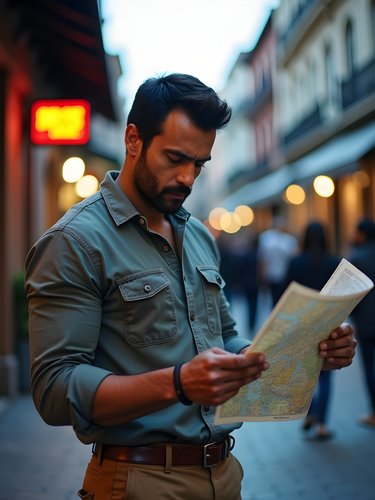








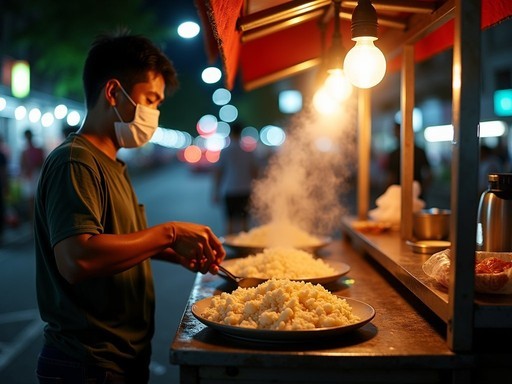
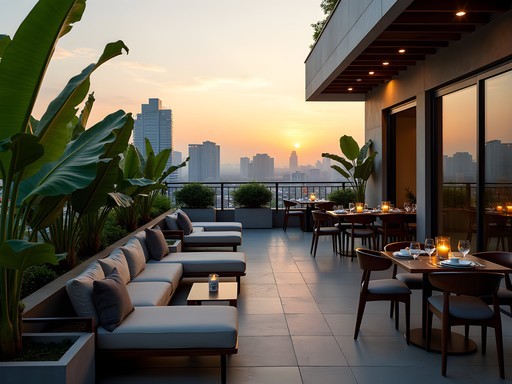
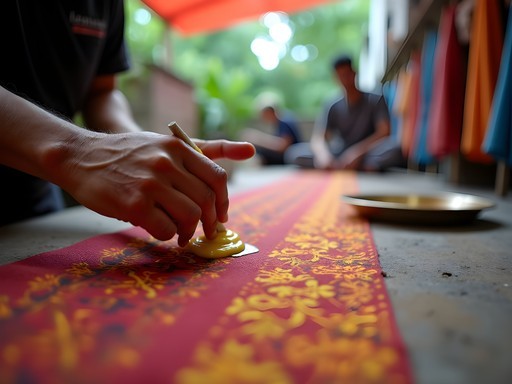
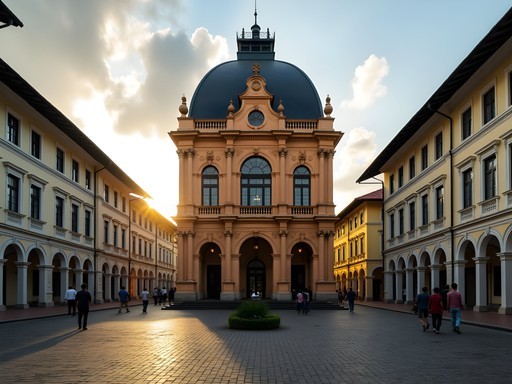

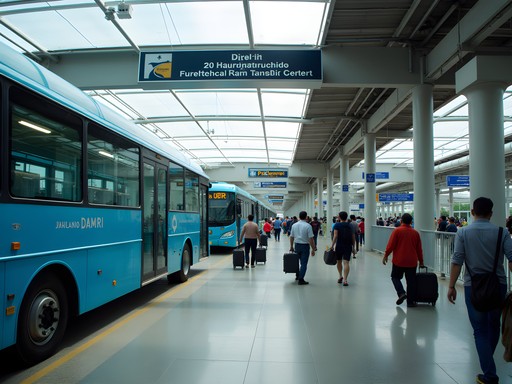

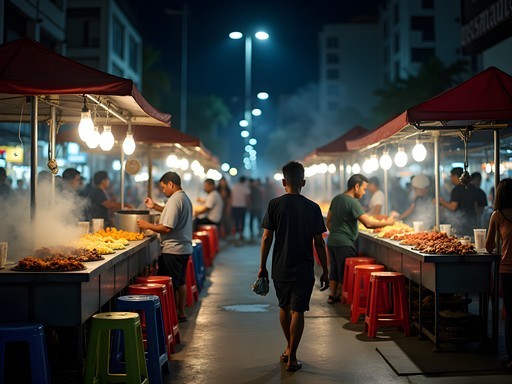
Comments
skynomad8198
How did you handle the heat while exploring all these food spots? Jakarta's humidity sounds intense!
Nathan Sanchez
The humidity is no joke! We paced ourselves with lots of AC breaks in malls and coffee shops. Early mornings and evenings were best for street food exploring. Always carried water and those little cooling towels you can wet - absolute lifesavers!
Taylor Moreau
Nathan, excellent coverage of Jakarta's culinary landscape. As someone who travels to Jakarta quarterly for business, I appreciate your attention to both the street food and fine dining aspects. The rooftop dining scene has indeed transformed dramatically over the past five years. For business travelers with limited time, I'd recommend focusing on the Menteng area, where you can experience excellent traditional Indonesian cuisine in more upscale settings. The historical dining experiences you mentioned at Café Batavia are particularly worthwhile for client dinners - the colonial atmosphere provides an excellent talking point. One practical note: the afternoon thunderstorms typically occur between 2-4pm during rainy season (October-March), so plan indoor dining options accordingly during those hours.
Nathan Sanchez
Thanks for the additional insights, Taylor! Great point about Menteng for business travelers. And yes, timing those thunderstorms is crucial - we got caught out twice before learning our lesson!
globediver
Great post! Having spent considerable time in Jakarta over the years, I'd add that timing is everything with street food there. The best spots often sell out by 2pm, especially the legendary bakso (meatball soup) vendors. That thunderstorm warning is legit - I once got caught in a downpour at Pasar Baru and ended up sheltering in a tiny coffee shop for two hours. Turned out to be a blessing as they served the most incredible pisang goreng (fried bananas) I've ever tasted! For first-timers, I'd recommend joining one of the evening food walks in Glodok (Jakarta's Chinatown) - safer way to sample everything without worrying about stomach issues.
oceanfan
Those rooftop dining spots sound INCREDIBLE!! Anyone tried the one with the satay grill mentioned in the post? Worth the splurge??
Hunter Thompson
Just got back from Jakarta last month and this post is SPOT ON! The street food scene is absolutely mental. That area near Pasar Baru you mentioned? Pure gold mate! I stumbled across this tiny warung selling the most incredible mie goreng I've ever had - the old lady cooking it must have been at least 80 and she was an absolute wizard with the wok! One tip for anyone heading there: don't miss the Kota Tua area at night - there's this row of satay vendors that set up around 7pm and the smoky aroma is something else. Bring wet wipes though, it gets properly messy!
skynomad8198
Hunter - did you find the language barrier difficult when ordering from street vendors? Heading there soon and my Indonesian is non-existent!
Hunter Thompson
Not as bad as you might think! Most vendors know basic English food terms, and pointing works wonders. I used translation app for the trickier stuff - downloaded Indonesian offline and just showed my phone screen when needed. Most important phrases to learn: 'pedas' (spicy) and 'tidak pedas' (not spicy) unless you want your mouth on fire! 😂
travelbuddy
Those rooftop dining spots sound amazing! Adding to my list.
winterclimber7605
OMG those street food descriptions have my mouth watering!! The way you described those food carts with their lanterns like stars in the night sky was pure poetry, Nathan! I've never considered Jakarta as a foodie destination but now it's definitely on my list!
Nathan Sanchez
Thanks so much! Jakarta really surprised me too - the food scene is incredible and so underrated. Hope you get to experience it someday!
starguide
How's the vegetarian food situation in Jakarta? Is it easy to find meat-free options at these street food places?
Nathan Sanchez
Great question! There are definitely options - look for gado-gado (vegetable salad with peanut sauce), tempe dishes, and tahu goreng (fried tofu). Many warungs can make nasi goreng without meat too if you ask. Just be aware that some places use shrimp paste in seemingly vegetarian dishes, so it helps to learn how to specify 'no shrimp paste' in Indonesian.
starguide
Thanks Nathan! That's really helpful. I'll learn those key phrases before my trip.
Sophia Gomez
Nathan, your post brought back so many memories of my business trip to Jakarta last year! I completely agree about the street food constellation - there's nothing like it. I'd add that the historical dining experiences at Café Batavia in the old town were a highlight for me. The colonial architecture and black and white photographs create such atmosphere, and their rijsttafel was phenomenal. For anyone visiting, I'd recommend exploring the side streets off Jalan Sabang after 7pm when the whole area transforms into an incredible food bazaar. Just bring cash and an empty stomach!
travelbuddy
Jalan Sabang is now on my list! How many days would you recommend to really explore Jakarta's food scene?
Sophia Gomez
I'd say minimum 3-4 days just for the food! The city is massive and traffic can eat up your time. If possible, stay in different neighborhoods to sample local specialties without the commute.
mountainclimber
Nathan, loved your descriptions of the thunderstorm watching at Pasar Baru! How many days would you recommend to properly explore Jakarta's food scene?
wanderlife
Not Nathan but I spent 4 days there and felt it wasn't enough! So much to eat, so little stomach space lol
Frank Garcia
I'd say minimum 5 days if you're serious about food. Jakarta is massive and the traffic makes getting around time-consuming. Plan your eating adventures by neighborhood to maximize your culinary experiences!
Venture X
Premium card with 2X miles, $300 travel credit, Priority Pass